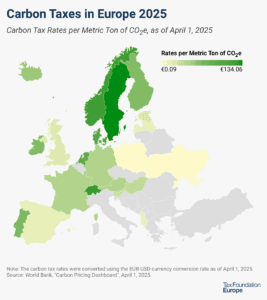
Recent Developments on the EU Digital Turnover Tax
3 min readBy:Since March of this year, the European Union (EU) has been considering a proposal to taxA tax is a mandatory payment or charge collected by local, state, and national governments from individuals or businesses to cover the costs of general government services, goods, and activities. the revenues of digital companies. The tax would be a 3 percent levy on revenues generated from digital services at large corporations. Turnover taxes like the one being proposed ignore the costs associated with sales and create serious economic distortions very much like taxes on gross receipts.
The proposal is designed such that the revenues subject to the tax would be attributed to countries partially based on assumptions about the value that users of digital services create. It is expected that the proposal would raise approximately €5 billion ($5.8 billion) per year—an amount equal to 0.08 percent of revenues raised by EU countries in 2016.
Multinational digital companies based in the U.S. like Facebook, Google, Apple, Amazon, and Microsoft would likely be impacted by the tax.
The tax proposal has been met with various levels of criticism and support. Some concerns with the turnover tax point out its potential harmful effects—especially for start-ups. Several EU countries are calling for a more global solution from the OECD rather than one that potentially pits the EU against major trading partners. Despite those concerns and other questions about the proposal, the proponents of the digital tax are pushing forward.
Austria is currently in its presidency term for the EU and has announced plans to reach a conclusion of the debate on the turnover tax by the end of the year. The Austrian government is supportive of the proposal and is hoping that countries that oppose the tax can agree to a compromise proposal.
The French finance minister, one of the strongest supporters of the plan, has offered some potential changes to the turnover tax as part of an effort to court some of the opponents of the plan. These potential changes include:
- Revenue sharing arrangement
- Sunset clause tied to the adoption of an OECD solution for digital taxation
The revenue sharing arrangement would be designed to compensate countries that would lose out under the new scheme to apportion revenues based on user interactions. The goal of the sunset clause is to recognize that a more global solution would replace the EU turnover tax when the OECD reaches an agreement on digital taxation. The OECD review of digital taxation options is expected to conclude in 2020.
Austria has also offered a concession that would exclude the sale of user data from the tax, potentially eroding much of the base upon which the tax would apply. This would result in an even lower amount of revenue raised than the initial proposal.
Tax legislation at the EU level currently requires unanimity among member countries to be adopted. However, European Commission President Jean-Claude Juncker is calling for a change of procedure to allow tax proposals to be adopted by a qualified majority, or 55 percent of member states representing at least 65 percent of the EU population. This method of adoption would likely sideline smaller countries that oppose the turnover tax.
The key problem with the 3 percent digital tax is not whether revenues would be appropriately shared, how temporary it might be, or what is included or excluded in the tax baseThe tax base is the total amount of income, property, assets, consumption, transactions, or other economic activity subject to taxation by a tax authority. A narrow tax base is non-neutral and inefficient. A broad tax base reduces tax administration costs and allows more revenue to be raised at lower rates. . The problem is that turnover taxes are fundamentally economically harmful. Without changing the underlying structure of the tax, the potential options are simply offers to make cosmetic changes rather than address the main issues with the proposal.
Share this article




